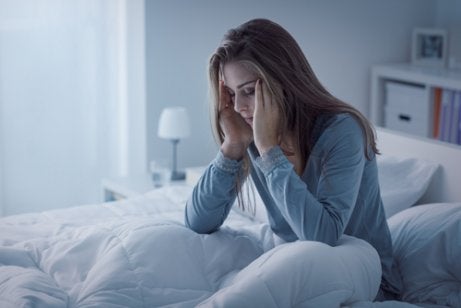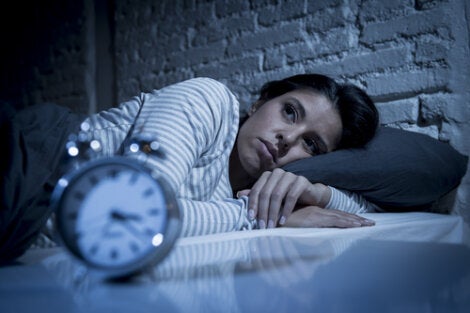Hypnomania: The Uncontrollable Desire for Sleep

Sleep disorders are a huge problem around the world, with insomnia being the most common. In fact, it’s believed that about one-third of the world’s population struggles with insomnia today. Hypnomania, the uncontrollable desire for sleep, is just one of many possible causes of insomnia, although it can also be a symptom of insomnia itself. Today, we’ll be taking a look at the different causes of this vicious cycle.
According to the American Academy of Sleep Medicine (AASM), between 33 and 50% of the adult population in the United States has trouble falling or staying asleep. This statistic is highly significant. Ironically, an obsession with sleep can actually cause sleep disorders, such as excessive daytime sleepiness or hypersomnia. In some cases, it can also lead to mental health conditions such as depression.
In this article, we’ll learn more about the symptoms, causes, and treatment of hypnomania. We’ll also be exploring the potential relationship between this condition and other psychological and physical issues.

What’s hypnomania and how does it differ from other sleep disorders?
The word hypnomania comes from the Latin words “hypnos”, meaning “dream”, and mania, meaning “madness”. This term refers to the intense and uncontrollable desire for sleep, to the point where it becomes an obsession.
This obsession can occur regardless of how many hours of sleep the person gets at night. However, it’s often related to problems such as insomnia. It’s important to differentiate between hypnomania and other similar terms, such as clinomania, narcolepsy, and hypersomnia.
Clinomania refers to the desire or obsession with staying in bed for as long as possible (not to be confused with the classic “five more minutes” routine we all do when our alarm clock goes off in the morning). Clinomania implies that the person has no intention of getting up, abandoning all other activities in favor of staying in bed (although not necessarily asleep).
Hypersomnia refers to excessive drowsiness, even after a good night’s sleep (of at least seven hours). The person may even have trouble staying fully awake.
Narcolepsy is an organic disorder in which the person has an extreme tendency to fall asleep. This is accompanied by periods of cataplexy, in which the person experiences sudden muscle weakness, hypocretin deficiency (also known as orexin), and shortened REM sleep latency (less than or equal to 15 minutes).
Causes and consequences of hypnomania
Hypnomania can be both the cause and the result of a number of sleep disorders. In some cases, it may even be masking other underlying issues. In many cases, insomnia is the cause of hypnomania, as the decrease in the quality and the quantity of our sleep can lead to an obsession with getting more shut-eye.
So, what’s the problem? The problem is that this all-consuming obsession with sleep can actually lead to increasingly severe bouts of insomnia. This creates a vicious cycle, with each condition exacerbating the other.
Constantly thinking about the fact that you need to sleep (due to the belief that you haven’t slept enough) can make you feel drowsy, even if you aren’t actually that tired. This drowsiness can mean that you’re unable to stay alert throughout the day, affecting your work or school performance.
Those who struggle with hypnomania may also find themselves facing another problem: trying to sleep when they aren’t actually tired. This can lead them to spend hours in bed thinking that they’re tired but finding themselves unable to fall asleep. This can make them believe or feel that they’re suffering from insomnia.
“No small art is it to sleep: it is necessary for that purpose to keep awake all day.”
-Friedrich Wilhelm Nietzsche-
On the other hand, hypnomania can sometimes mask a bigger underlying problem. People with depression can spend the entire day thinking about going to bed. For them, it’s the moment when the day finally comes to end, when they can stop thinking, worrying, and suffering.
Melancholic depression is often accompanied by difficulty falling asleep and waking up early in the morning. However, in cases of atypical depression, the predominant sleep problem is often hypersomnia.
If a doctor suspects that someone may be suffering from hypnomania, they’ll also need to confirm whether or not the patient meets the other diagnostic criteria for depressive disorders. That way, they can make an informed diagnosis and choose the most effective treatment plan.
Possible treatment options
In order to choose the best course of treatment, a doctor first needs to carry out an evaluation to determine whether or not the hypnomania is the result of a larger underlying issue. Similarly, they will also need to perform a functional analysis to determine the possible causes and consequences of the issue.
If they conclude after the evaluation that the hypnomania is caused by the insomnia, the doctor may offer a number of different treatment options to help manage it. As it may well be the cause of the hypnomania, tackling the insomnia is essential. If they can manage to increase the quality or the quantity of their sleep, the patient may find it easier to manage their obsession. Some techniques include:
- Progressive muscle relaxation techniques or autogenic exercises to help relax the body.
- Stimulus control techniques. Different ways to avoid behaviors that are incompatible with a good night’s sleep, and to help establish a daily routine.
- Sleep hygiene guidelines. Good habits that make it easier to fall asleep.
- Sleep restrictions to limit the number of hours spent in bed awake.
- Paradoxical intention. A widely used technique to help stop patients from worrying about their insomnia.
This last technique can be really useful in cases where hypnomania is both the cause and the result of insomnia. In these cases, the fact that the person often sleeps badly leads them to start obsessing about the idea that they need to get more sleep. In turn, this obsession becomes the thing that stops them from sleeping properly. Paradoxical intention can be used to break that vicious cycle.
This technique consists of asking the person to spend as much time as possible awake in bed. By changing the command from “You have to sleep” to “You have to stay awake”, the obsession with falling asleep suddenly disappears. This shift in focus often means that the person finds it much easier to drift off to sleep.

Our minds play tricks on us
The link between hypnomania and insomnia is a clear example of how our own brains can sabotage us. Everybody worries now and again. In many cases, it can help us to find a solution to our problems. However, worrying too much can also make matters worse. It’s almost as if our brains have a “tolerable worry threshold”. When we exceed it, we lose the ability to solve problems, even if the solution is within our reach.
Some people spend so much of their time worrying about how much sleep they got last night that they end up turning it into a chronic disorder. While this doesn’t mean that you shouldn’t pay close attention to your sleeping habits, it’s important to worry in a useful and constructive way, without letting your worries rob you of a good night’s sleep.
“Nothing in life is quite as important as you think it is while you’re thinking about it.”
-Daniel Kahneman-
This text is provided for informational purposes only and does not replace consultation with a professional. If in doubt, consult your specialist.








